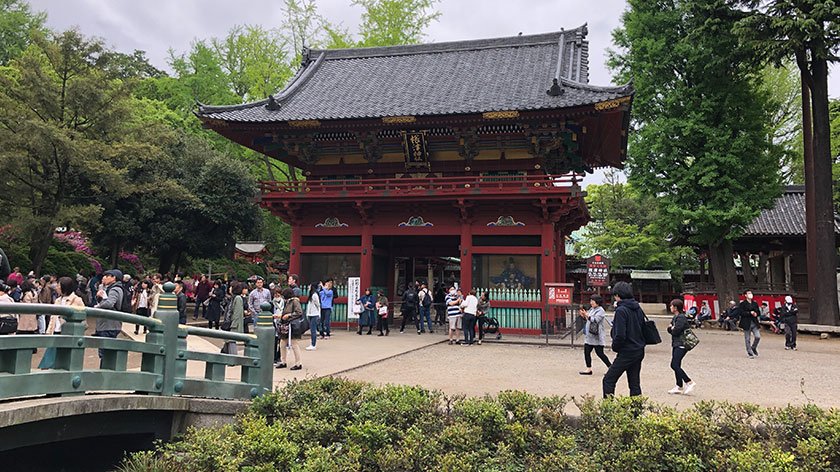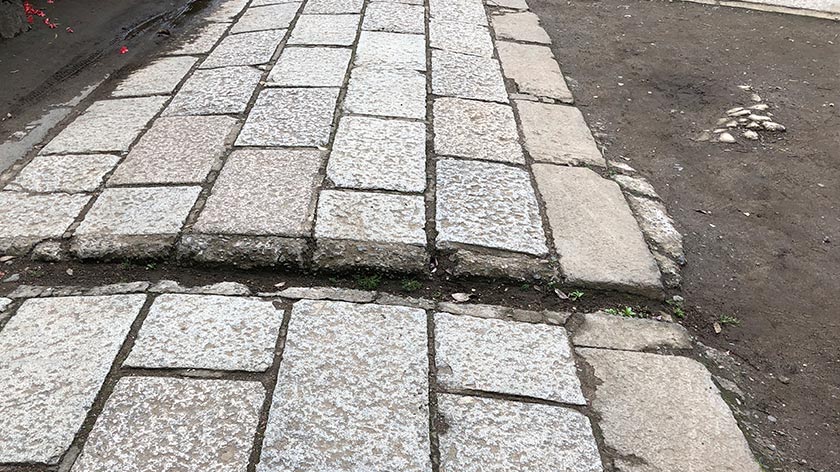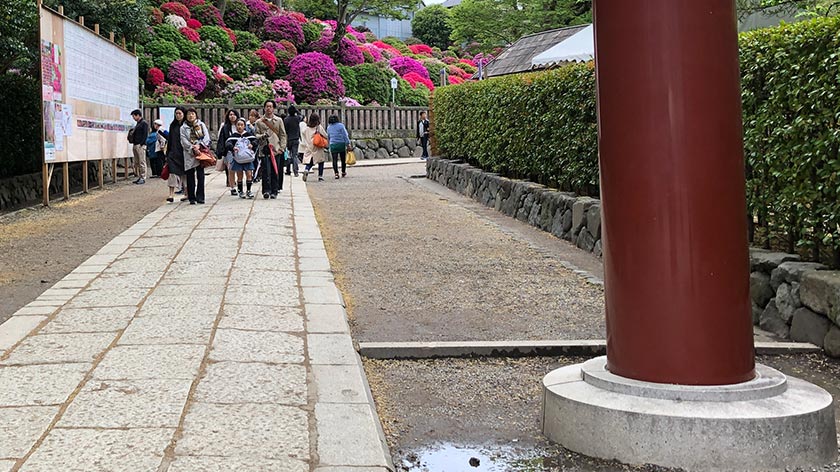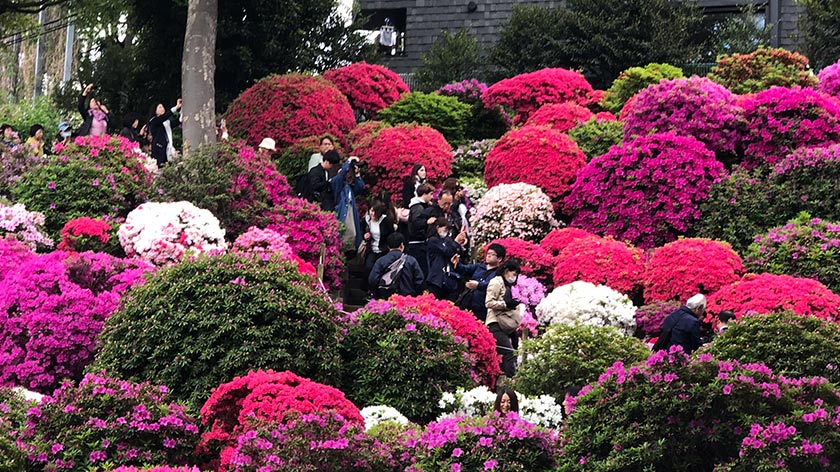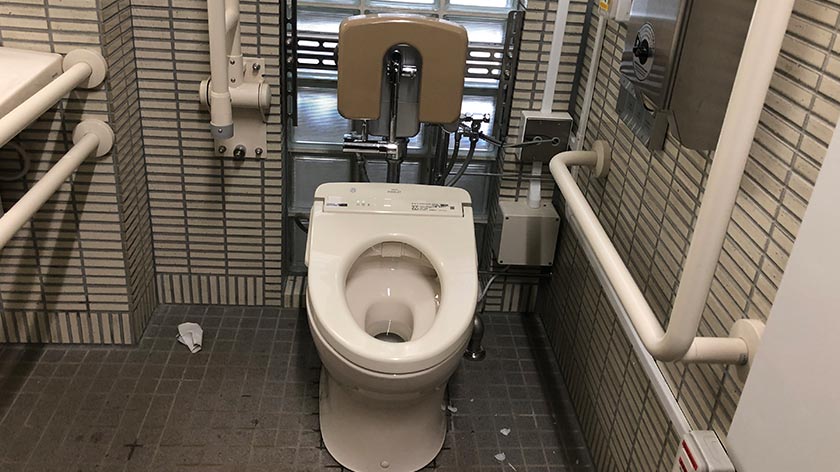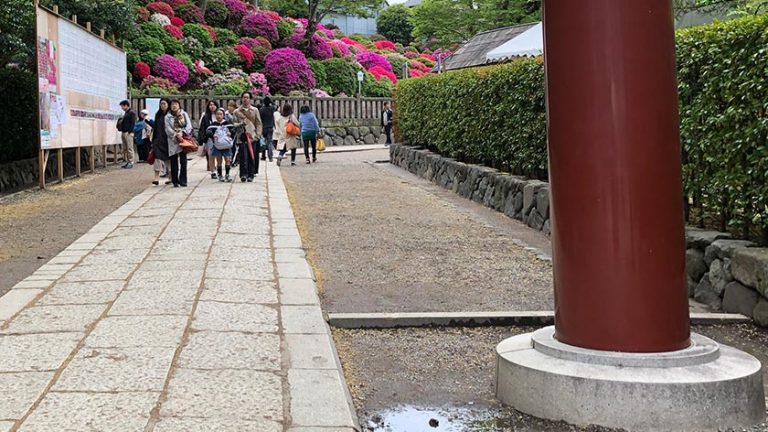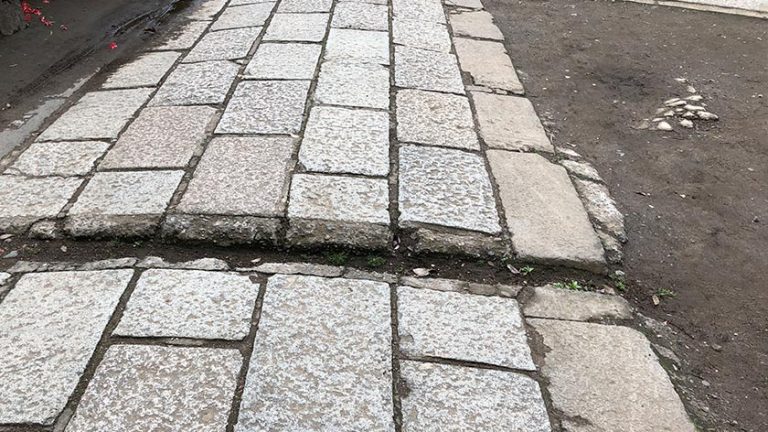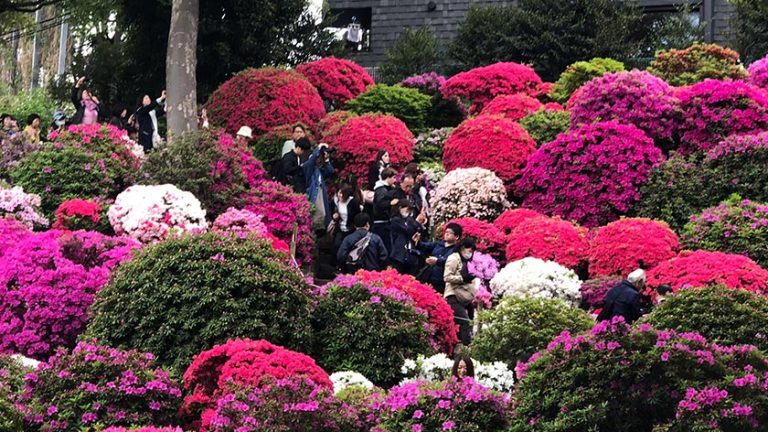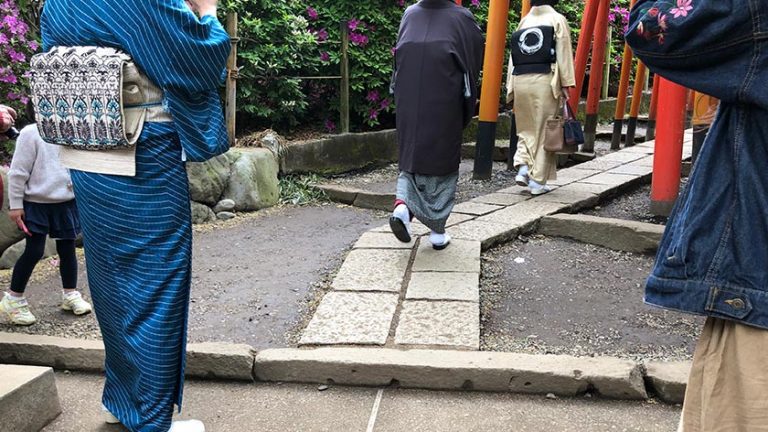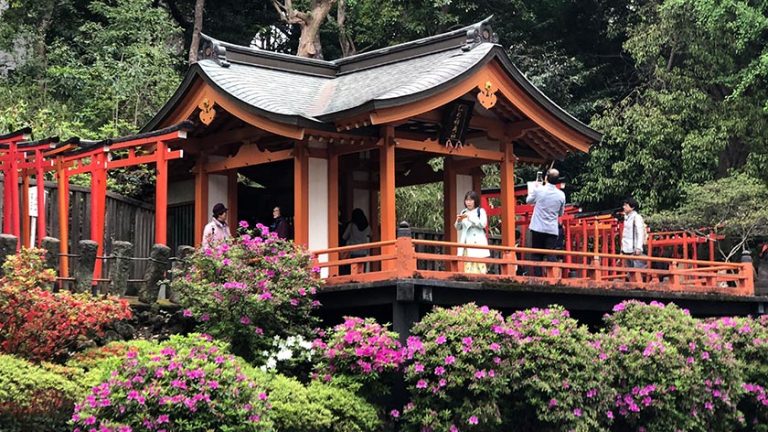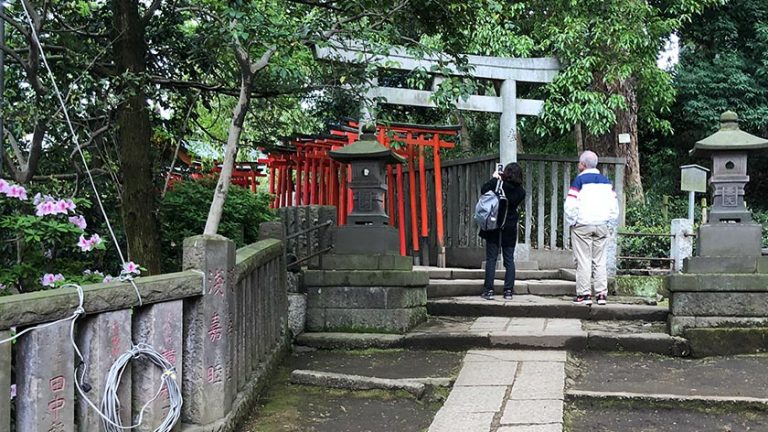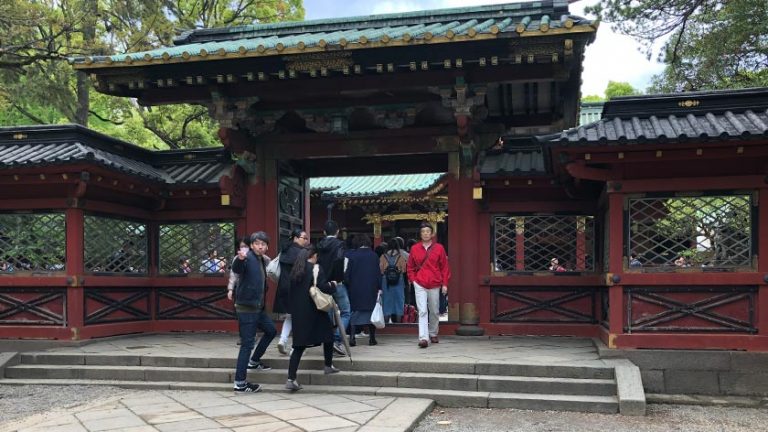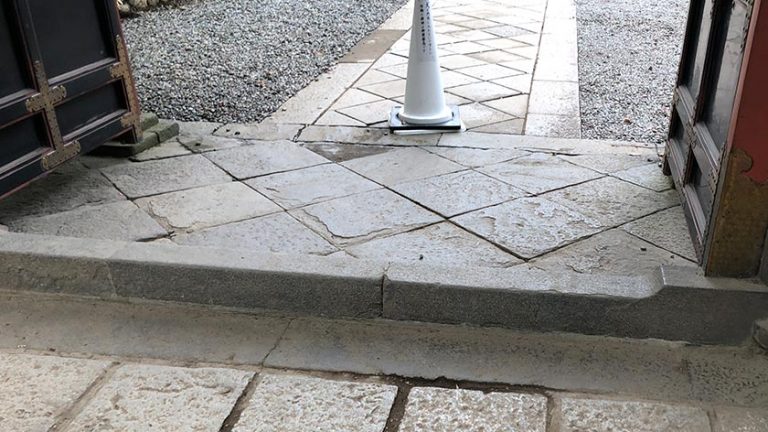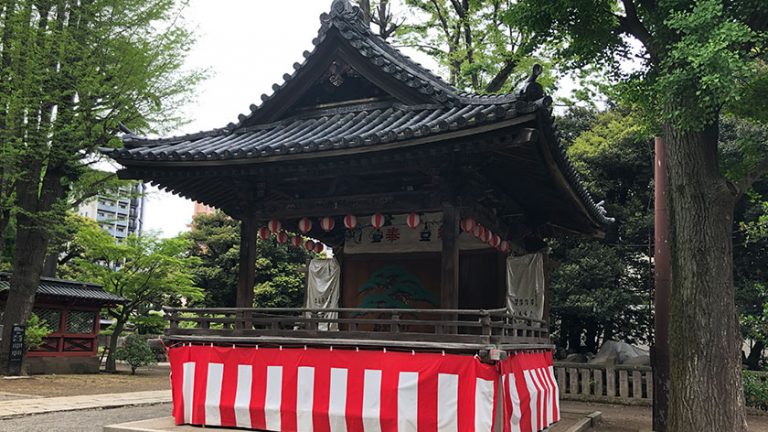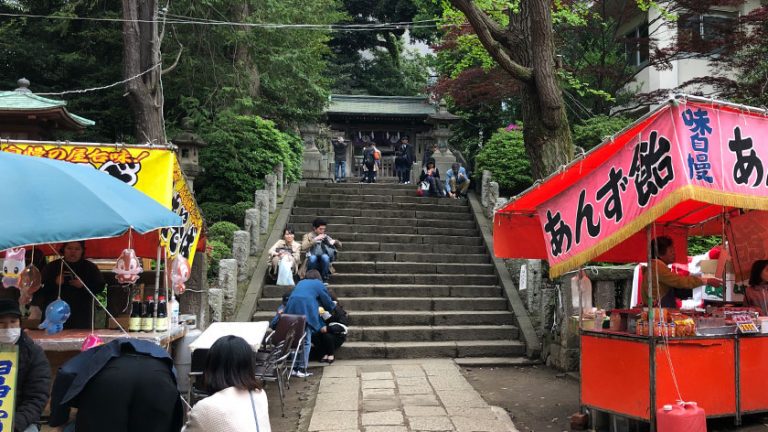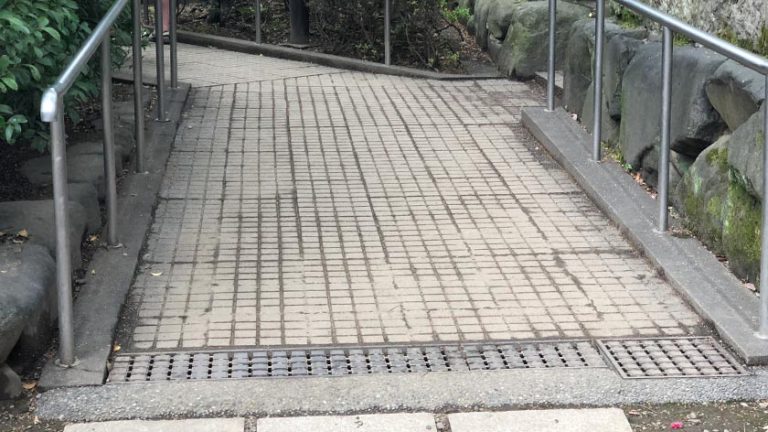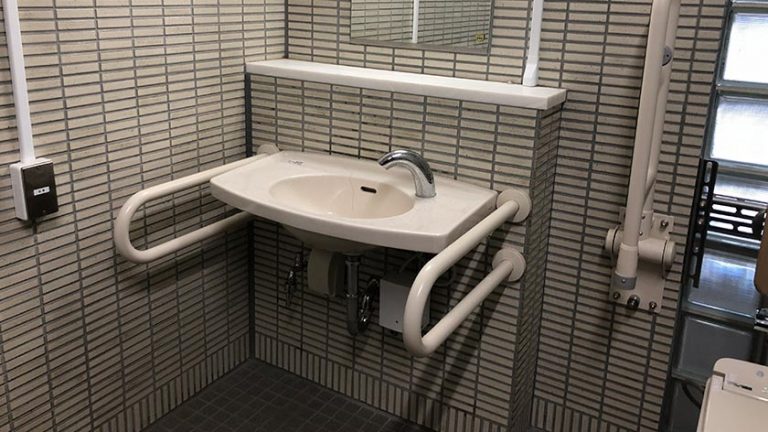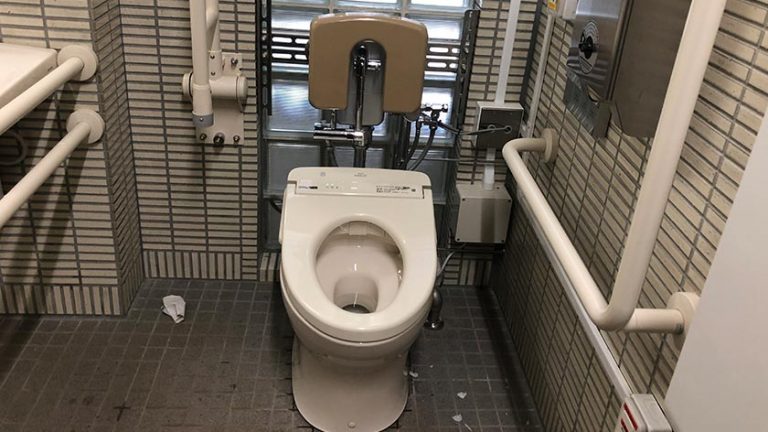- Overview

Nezu Jinja is known as one of Tokyo’s most beautiful shrines. However, it has many challenges for those in wheelchairs or other disabilities.
Background Information
Nezu Jinja was established in 1705 and is one of the oldest shrines in Tokyo. As with Nikko Toshogu, the shrine was built in the Ishi-no-ma-zukuri style of Shinto architecture. It is one of the “Tokyo Ten Shrines”.
Dedicated to Susanoo-no-Mikoto, the god of the sea and storms, legends say that the shrine was established in the 1st century by the son of Emperor Keikō, Yamato Takeru. Originally located in Sendagi, it was moved to the current location in 1705 by Tokugawa Tsunayoshi when he chose Tokugawa Ienobu as his successor. Ienobu chose the shrine’s Susanoo-no-Mikoto to be his guardian deity.
The shrine has a path of red torii gates as well as several buildings designated as Important Cultural Properties, including the main temple building, the surrounding wall, and the two storied gate located between the main hall and a stone bridge.
Known as one of Tokyo’s most beautiful shrines, it is famous for its Azalea Festival held from early April until early May, with 3000 shrubs from over 100 varieties of azalea. A path winds through azalea shrubs on the side of a hall.
The shrine is free to visit but the flower viewing route charges a small fee of 200 yen.
Getting There
Nezu Shrine can be reached from Nezu Station, Sendagi Station, or Todaimae Station. All three stations are wheelchair accessible, however, it should be noted that the hill leading to the shrine from Todaimae Station is fairly steep.
Accessibility
While the shrine is beautiful, there are a few things that those with disabilities will need to be aware of when visiting.
The pathways around the shrine are made of large stones and are very bumpy. There are also several areas where there are large gaps in the path.

The dirt around the paths has washed away in many areas and can create a height difference which not only makes it hard for wheelchair users, but also a possible tripping hazard for others with mobility challenges or visual impairments.

The famous azaleas are located on a steep hill with a footpath winding through the area. The first 10-20% of the path is wheelchair accessible, but the remaining area can only be accessed via steps.

The entrance to the torii pathway by the azalea garden has a step at the entrance. It is about 8-10cm and manual wheelchair users should be able to get up.

However, the path is only barely wide enough for a wheelchair and the opposite end has a number of stairs. While manual wheelchairs can return on the path they came up, it is generally one-way and will require possibly asking many people to move off the path when returning.

Both entrances through the wall to the main shrine have stairs. The main entrance has several steps.

The side entrance has a door sill which is pretty high – going up then immediately back down.

There are no benches to rest on, and no tactile blocks or braille. One accessible toilet is located near the main shrine entrance.

Conclusion
While there are many beautiful areas throughout the shrine, those with mobility challenges and wheelchair users will have some challenges ahead of them. Even from a wheelchair, the azalea is quite nice to see and at least the first part of the torii path can be seen. Everyone should exercise caution when moving around to avoid the gaps and sudden changes in height on the paths.
- Access
No Records Found
Sorry, no records were found. Please adjust your search criteria and try again.
Google Map Not Loaded
Sorry, unable to load Google Maps API.
- Photos
- Reviews
- Nearby Hotels
- Accessible Room – A Type Toyoko Inn is a very reasonably priced hotel chain that has done an excellent job of making the majority of their hotels accessible to Read more...
- Hotel Chinzanso Tokyo is located uptown in Mejiro. While it is in the heart of Tokyo, the hotel is surrounded by a spacious scenic green garden, which gives the hotel Read more...
Have a question?
We try our best to provide information to a wide audience. But everyone has different needs.
If you have some specific questions about this listing, come join us on Tabifolk in the Japan group and we will get you the information you need!
Share your pictures of your trip or look up the accessibility of your next location with SIM cards or pocket WiFi!
